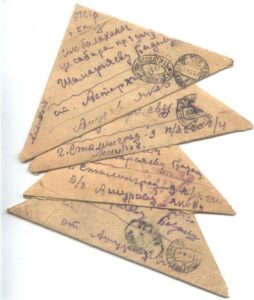 The three great scourges of humanity have histor
The three great scourges of humanity have histor ically been war, famine, and pestilence. Modern technology though seems to have solved the problems of the devastation of two of these. In the last two centuries over 100 million people have died in famines. But fertilization, irrigation and genetic engineering have today made famine more of a byproduct of war than a primary killer. And infectious disease, after killing hundreds of millions throughout history, has largely been defeated. But war still kills millions each decade, and in the nuclear age we are always just a few poor Presidential decisions away from complete annihilation.
ically been war, famine, and pestilence. Modern technology though seems to have solved the problems of the devastation of two of these. In the last two centuries over 100 million people have died in famines. But fertilization, irrigation and genetic engineering have today made famine more of a byproduct of war than a primary killer. And infectious disease, after killing hundreds of millions throughout history, has largely been defeated. But war still kills millions each decade, and in the nuclear age we are always just a few poor Presidential decisions away from complete annihilation.But wars make for great philately. Borders change, troops write home, postal service is makeshift and intermittent. And no war is more interesting from a philatelic point of view than WWII (and no war may ever be as interesting philatelically, as well-future wars, no matter how deadly should be short lived affairs, and the ubiquity of electronic communications now means that there will be far less for collectors to interest themselves in later).
 WWII was so great philatelically for two major reasons. First, the wealth and education levels of the countries involved meant that there was lots of communication, a vast paper trail and huge amounts of material saved. When the Mongols virtually conquered the world there was no postal communication and nothing to collect. Not so World War II. And second, and more importantly, WWII was truly a world war. Scores of nations on multiple continents, thousands of battles, Prisoners of War (something the Mongols never concerned themselves with either) and constantly shifting borders mean that any of scores of areas could occupy a philatelist’s lifetime.
WWII was so great philatelically for two major reasons. First, the wealth and education levels of the countries involved meant that there was lots of communication, a vast paper trail and huge amounts of material saved. When the Mongols virtually conquered the world there was no postal communication and nothing to collect. Not so World War II. And second, and more importantly, WWII was truly a world war. Scores of nations on multiple continents, thousands of battles, Prisoners of War (something the Mongols never concerned themselves with either) and constantly shifting borders mean that any of scores of areas could occupy a philatelist’s lifetime. The philatelic popularity of most wars is cyclical and it runs like this: the generation that fought in the war is the first to actively collect the philately of the war and they begin in earnest as they approach retirement. This led, in the case of WWII collecting, to a rapid increase in interest (and prices) in the stamps and covers that the war produced beginning in the 1980’s. Then, that generation dies out and there is weakness in that war’s philatelic market for a generation or two until the war is rediscovered, so to speak. This pattern happened to US Civil War collecting which flourished in the late Nineteenth century and languished in the early Twentieth, only to boom again. And it happened with the philately of WWI. If you are looking for a great specialty with room for growth in the years ahead, you should use the fact that the WWII generation is selling their collections so it may be time to rediscover this fascinating specialty.
The philatelic popularity of most wars is cyclical and it runs like this: the generation that fought in the war is the first to actively collect the philately of the war and they begin in earnest as they approach retirement. This led, in the case of WWII collecting, to a rapid increase in interest (and prices) in the stamps and covers that the war produced beginning in the 1980’s. Then, that generation dies out and there is weakness in that war’s philatelic market for a generation or two until the war is rediscovered, so to speak. This pattern happened to US Civil War collecting which flourished in the late Nineteenth century and languished in the early Twentieth, only to boom again. And it happened with the philately of WWI. If you are looking for a great specialty with room for growth in the years ahead, you should use the fact that the WWII generation is selling their collections so it may be time to rediscover this fascinating specialty.
